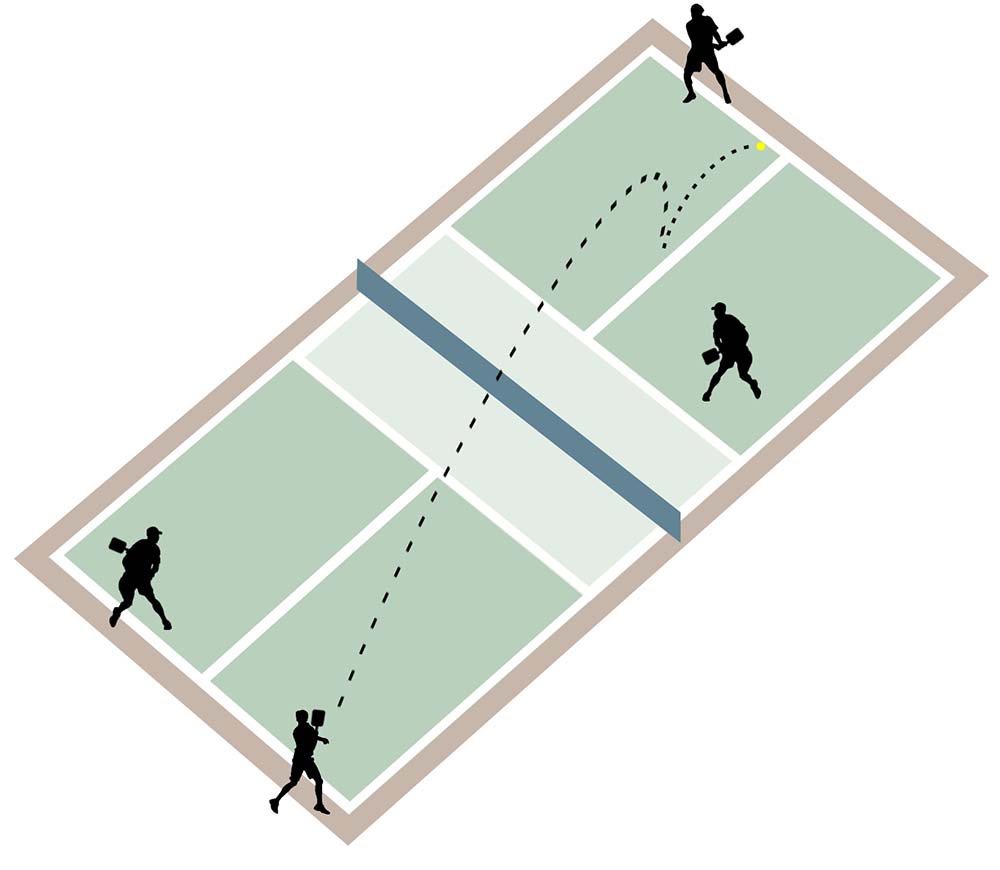Terminology:
Are you learning pickleball for the first time or are you brushing up on the game? Here's a list of pickleball terms you should know.
Carry
Hitting the ball in such a way that it does not bounce away from the pickleball paddle but tends to be carried along on the face of the paddle during its forward motion.
Cross-court
The court diagonally opposite your court.
Dead Ball
The term used to describe the pickleball ball after a fault is declared.
Dink Shot
A soft shot that is intended to arc over the pickleball net and land within the non-volley zone.
Double Bounce
A ball that bounces more than once, on one side, before it is returned. Following the serve, each side must make at least one ground-stroke, prior to volleying the ball (hitting it out of the air).
Double Hit
One side hitting the pickleball ball twice before it is returned over net. Double hits may occur by one player or could involve both players on a team.
Drop Shot
A groundstroke shot that falls short of the opponent’s position.
Drop Shot Volley
A volley shot that is designed to “kill” the speed of the ball and return it short, near the net, to an opponent positioned at or near the baseline.
Fault
A fault is any action that stops play because of a rule violation.
First Serve
To begin a new game, only one partner from the first serving side is only allowed to serve. After the first fault, the serve switches to the opposing side.
Groundstroke
Hitting the ball after one bounce.
Half Volley
A groundstroke shot where the paddle contacts the ball immediately after it bounces from the court and before the ball rises to its potential height.
Hinder
Any element or occurrence that affects play.
Let
A serve that hits the net cord and lands in the service court. Let may also refer to a rally that must be replayed for any reason.
Line Calls
If any part of the ball lands on the court lines, it is considered in (except in the case of the Non-Volley Line)
Lob
A shot that returns the ball as high and deep as possible, forcing the opposing side back to the baseline.
Non-Volley Zone ("The Kitchen")
The section of court adjacent to the net. A player cannot volley a ball while standing within the non-volley zone. It includes all lines surrounding the zone.
Second Serve
A term used to describe the condition when a serving team begins the game or subsequently loses the first of its two allocated serves.
Overhead Slam / Smash
A hard, overhand shot usually resulting from an opponent’s lob, high return, or high bounce.
Passing Shot
A volley or groundstroke shot that is aimed at a distance from the player and is designed to prevent return of the ball.
Rally
Continuous play that occurs after the serve and before a fault.
Replays
Any rallies that are replayed for any reason without the awarding of a point or a side out.
Service Court
The area on either side of the centerline, bounded by the non-volley line, the baseline, and the sideline. All lines are included in the service court except the non-volley line.
Side Out
Declared after one side loses its service and other side is awarded service.
Volley
Hitting the ball in the air, during a rally, before the ball has a chance to bounce onto the court.



